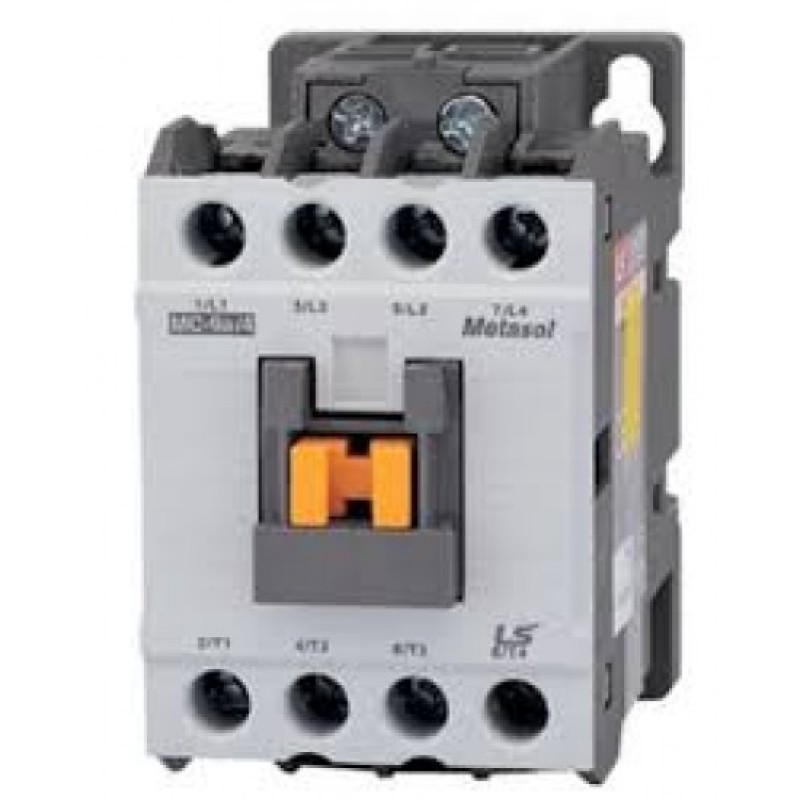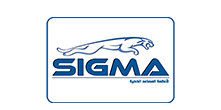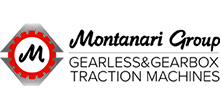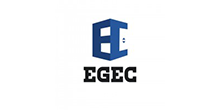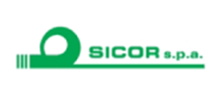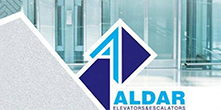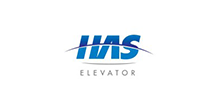
تسجيل الدخول أو إنشاء حساب
Closeالزبون العائد
أنا زبون عائد
تسجيل الدخول أو إنشاء حساب
Closeتسجيل حساب
إذا كان لديك بالفعل حساب معنا ، يرجى تسجيل الدخول على نموذج تسجيل الدخول.
لقد تم انشاء الحساب بنجاح !
شكراً على التسجيل في موقع Egyptlifts!
سيتم إعلامك عن طريق البريد الإلكتروني عندما يتم تفعيل حسابك من قبل فريق عمل الموقع.
إذا كانت لديك استفسارات عن نظام عمل الموقع، يرجى الاتصال بفريق عمل الموقع.
خروج
تم تسجيل خروجك من الحساب. يمكنك مغادرة الموقع بأمان
سلة التسوق الخاصة بك قد تم حفظها، الطلبات الموجودة في السلة سوف يتم استعادتها كلما قمت بتسجيل الدخول إلى حسابك.
كونترول اسانسير

كونترول اسانسير
يُعتبر الأسانسير من أهم وسائل التنقل العمودي في العصر الحديث، حيث يمكنه نقل الأشخاص والبضائع بسهولة وفعالية داخل المباني العالية والهياكل المتعددة الطوابق. واحتل كونترول اسانسير مكانة بارزة في هذا السياق، حيث يعد العقل المدبر والقلب النابض لعملية التحكم والإدارة في حركة مصاعد.
تعريف كونترول اسانسير
كونترول اسانسير هو نظام أو تقنية تستخدم للتحكم وإدارة عمليات الأسانسير أو مصعد. يعمل كونترول اسانسير على تنظيم حركة الاسناسير بين الطوابق المختلفة في المبنى بطريقة آمنة وفعالة. يتمثل الهدف الرئيسي لهذا النظام في توجيه الاسانسير بشكل سلس وسريع إلى الطابق المطلوب دون وقوع حوادث أو مشاكل. (دليل شامل عن المصاعد)
تتيح تقنيات كونترول المصعد للصعود والهبوط بسلاسة وبأمان، مما يضمن تجربة تنقل مريحة وسهلة للمستخدمين. إن فهم كيفية عمل كونترول اسانسير ودوره الأساسي في توجيه الأسانسيرات إلى الأماكن المطلوبة يعد أمرًا أساسيًا لفهم كيفية تحقيق التنقل العمودي الفعال في المباني الحديثة. (سعر اسانسير جديد أو مستعمل)
وظائف كونترول الأسانسير الأساسية
هناك أكثر من وظيفة لكونترول مصعد وهي:
· التحكم في الحركة: يتيح للأسانسير الصعود والهبوط بسلاسة وبسرعة محددة بحيث يتم توفير أقصى قدر من الكفاءة والراحة للمستخدمين. (سعر جهاز شفرة الأسانسير- هاي ليفت)
· إدارة الطلبات: يتعامل مع طلبات المستخدمين لركوب الأسانسير من مختلف الأماكن في المبنى ويقوم بترتيبها بحيث يمكن تنفيذها بأفضل ترتيب. (سعر ريموت الأسانسير وطريقة استخدامه)
· ضمان الأمان: يتمتع نظام كونترول اسانسير بميزات أمان متقدمة مثل أقفال الأبواب وأجهزة الاستشعار وأنظمة الإشارات لضمان سلامة المستخدمين. (سعر طرمبة باب المصعد)
· الصيانة والإصلاح: يمكن لنظام كونترول الأسانسير تقديم معلومات حول حالة الصيانة والإصلاح الضرورية للأسانسيرات، مما يساعد على الحفاظ على أداء جيد وسلامة مستمرة. (شركة للمصاعد والأسانسيرات في مصر)
بشكل عام، يلعب كونترول اسانسير دورًا حاسمًا في توفير وسيلة تنقل عمودية فعالة وآمنة داخل المباني العالية والهياكل المتعددة الطوابق. (عروض صيانة المصاعد)
أهمية كونترول اسانسير
تعتبر كونترول الأسانسير أمرًا بالغ الأهمية في سياق المباني الحديثة، وله العديد من الأهميات التي تجعله ضروريًا:
· سهولة التنقل العمودي: يساعد كونترول الأسانسير في توفير وسيلة سهلة وفعالة للتنقل العمودي داخل المباني العالية والهياكل المتعددة الطوابق. هذا يجعلها ضرورية للأفراد الذين يعانون من صعوبة التنقل أو الذين يحملون أمتعة ثقيلة. (فني تصليح مصاعد)
· توفير الوقت والجهد: يقلل كونترول الأسانسير من الحاجة إلى استخدام السلالم، مما يوفر الوقت والجهد للمستخدمين ويسهم في زيادة الإنتاجية والكفاءة في المباني التجارية والمكاتب. (قطع غيار مصاعد فيصل)
· ضمان الأمان: كونترول الأسانسير يأتي مزودًا بأنظمة أمان متقدمة تضمن سلامة المستخدمين. يشمل ذلك ميزات مثل أقفال الأبواب وحساسات الحركة وأنظمة الإشارات التي تمنع حوادث الأسانسير. (قطع غيار مصاعد في مصر اسعار قطع غيار اسانسير)
· زيادة قيمة العقار: يعزز وجود أسانسير في المبنى من قيمته العقارية. يجذب وجود مصعد ذو نظام كونترول فعال المستخدمين والمستأجرين، مما يزيد من جاذبية المبنى ويؤدي إلى زيادة قيمته. (كبائن أسانسيرات)
· تحسين إمكانية الوصول: يساعد كونترول الأسانسير في تحسين إمكانية الوصول للأفراد ذوي الاحتياجات الخاصة وكبار السن الذين يعانون من صعوبة في استخدام السلالم. (كيف يمكنني استخدام أسانسير داخلي)
· تقليل الزحام: يقلل وجود أسانسير من الزحام في الأماكن التي يتم تداول الكثير من الأشخاص، مثل المستشفيات والمطارات والمراكز التجارية. (كيفية اختيار أفضل المصعد الكهربائي للشراء)
· توفير الطاقة: يمكن أن يتضمن نظام كونترول اسانسير أيضًا تقنيات لتوفير الطاقة عن طريق إدارة حركة المصعد بشكل أكثر كفاءة.
بشكل عام، يعتبر كونترول اسانسير جزءًا لا غنى عنه في تصميم المباني الحديثة ويساهم بشكل كبير في تحسين راحة وسلامة المستخدمين وزيادة قيمة العقار.
مكونات كونترول اسانسير
نظام كونترول الأسانسير يتكون من عدة مكونات أساسية تعمل معًا لتحقيق تحكم دقيق وآمن في حركة الأسانسير.
· وحدة التحكم (Control Unit):تعتبر هذه الوحدة العقلية للنظام، وتقوم بتحليل البيانات المستلمة من أجهزة الاستشعار واتخاذ القرارات بشأن حركة الأسانسير، بما في ذلك اختيار الاتجاه والسرعة المناسبة.
· وحدة القيادة (Drive Unit):تتحكم وحدة القيادة في حركة المصعد وتشغيل المحرك. تقوم بتحويل إشارات وحدة التحكم إلى حركة فعلية للأسانسير.
· أقفال الأبواب (Door Locks):تمنع أقفال الأبواب دخول المصعد أو الخروج منه أثناء حركته، وتفتح وتغلق تلقائياً للسماح بدخول وخروج المستخدمين.
· حساسات الأمان (Safety Sensors):تستخدم حساسات الأمان لاكتشاف أي عوائق أو مشكلات في ممر الأسانسير، وتوقف حركته إذا كانت هناك أي تهديدات لسلامة المستخدمين.
· أزرار التحكم (Control Buttons):تتواجد أزرار التحكم في الأدوار المختلفة وداخل المصعد نفسه، وتستخدم لاختيار الطابق المطلوب وتشغيل الأسانسير.
· نظام الإشارات (Signaling System):يُستخدم هذا النظام لعرض المعلومات حول حالة الأسانسير مثل الطابق الحالي والاتجاه والحالة التشغيلية.
· أجهزة الاتصال (Communication Devices):تُستخدم للاتصال بالأشخاص في حالات الطوارئ، مما يتيح التواصل بين المستخدمين ومركز الإشراف أو فرق الصيانة.
· نظام الصيانة والإصلاح (Maintenance and Diagnostic System):يُستخدم لرصد حالة المصعد وتسجيل معلومات حول الصيانة الضرورية والأعطال إذا كانت هناك.
· مفاتيح التحكم ولوحة التحكم (Control Keys and Panel):توجد هذه المفاتيح ولوحات التحكم عادة في غرفة التحكم الرئيسية وتسمح للفنيين بضبط واختبار النظام.
· كوابح الأمان (Safety Brakes):تستخدم كوابح الأمان للتحكم في حركة المصعد وضمان توقفه في حالة حدوث خلل أو انقطاع الكهرباء.
هذه المكونات تعمل معًا بشكل تنسيقي لضمان سلامة وكفاءة حركة الأسانسير وتوفير تجربة تنقل مريحة وآمنة للمستخدمين.
كيف يعمل كونترول اسانسير
كونترول اسانسير هو نظام معقد يتحكم في عمليات الأسانسير لضمان حركتها بسلاسة وأمان بين الطوابق المختلفة في المبنى
· استشعار الطلبات: يبدأ العملية بمجموعة من أجهزة الاستشعار في الأسانسير وعلى الأبواب الخارجية للمصعد. هذه الأجهزة تستشعر عندما يتم الضغط على أزرار الأسانسير على الأدوار المختلفة أو عندما يتم فتح الأبواب الخارجية.
· تحليل الطلبات: يتم جمع البيانات من أجهزة الاستشعار وإرسالها إلى وحدة التحكم في الأسانسير. يتم تحليل هذه البيانات لتحديد الطلبات القادمة من المستخدمين
LS كونتاكتور 9 أمبير
EGP216.00
LS كونتاكتور 9 أمبيرالكونتاكتورات هي أجهزة كهربائية تُستخدم للتحكم في تشغيل وإيقاف تشغيل الأحمال الكهربائية بشكل آمن وفعال، ويمكن أن تستخدم في مختلف التطبيقات بما في ذلك نظم المصاعد. وتحمل 9 أمبير تعني أن هذا الكونتاكتور يمكنه التعامل مع تيار كهربائي..
text_instock


.jpg)
